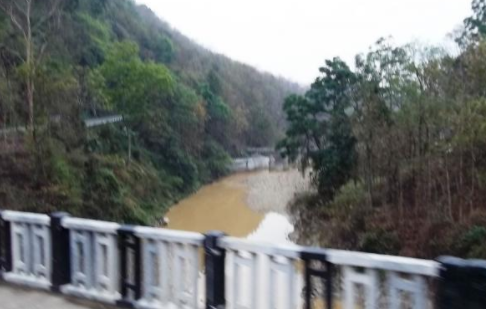Ashok Mahapatra
Our history teaches us that invaders and migrants to our country came from the Northwest. Our instinct has always been to defend our North-Western borders. This was one of the main reasons why the Chinese aggression of 1962 left such a scar that it has not healed even after six decades. Problem is, we engaged in a selective reading of history. Hence we were not psychologically prepared for such an invasion. We also have a blinkered perception that a Chinese threat will always come via the Tibetan Plateau. A logical analysis of history will tell us a different story.
Notably, there exists a place called Lekhapani in Assam which had a signboard indicating that CHONQING was 1773 km away. This was the World War II capital of China, and is situated in Sichuan Province. The Stillwell Road used to run from India to China. It would be worthwhile to mention that Kolkata is a similar distance away from Lekhapani, while Delhi is almost 2000km away.
In addition, the Stillwell Road passes by Northern Myanmar, where even today the writ of Myanmar government is non-existent. This is because different ethnic groups keep resisting the Burman domination. These groups have been aided and abetted since the time of Mao Zedong by China, both covertly and overtly. Furthermore, these groups have also become self-financing warlord states, with income being derived from smuggling, drug trafficking, and extortion on trade. All these are to the advantage of China.
The Ahom State, which lasted until the first quarter of the 19thCentury, was founded by a branch of the Shan-Thai. They trace their origin to people who crossed the Patkais from Yunan. The Patkais are the hills on India’s north-eastern border with Myanmar. We have also had invasions from Myanmar several times into the Brahmaputra Valley to devastating effect. This continued till their power was checked by the British through the signing of the 1826 Treaty of Yandabo.
In addition, the Singhphos section of the Kachins in Northern Myanmar periodically raided Assam for slaves.
It is sad but true that our historians are obsessed with the invaders and migration from the Northwest. They have never done justice to the invasions and migrations that affected the other parts of the country. Hardly any historical research has been carried out in the regions adjoining the Patkais. The Patkais are not as rugged as the Himalayas and the peaks are much lower. Hence, it must be appreciated that these mountains, unlike the Hindu Kush and the Himalayas, are unable to provide any sustainable barrier to prevent the movement of both men and material.
In 2016, it was proposed by China that the Stilwell Road be restored in order to revitalise trade and mutual cooperation in the region. The Stillwell Road that starts from Ledo goes across the Nampong and Pangsau Passes in Arunachal Pradesh, continues through Shindbwiyang, Bhamo, and Myitkyina in Myanmar, and finally ends at Kunming in China. In 2016, Myanmar contracted a Chinese firm to reconstruct the 312km road from Myitkyina to Pangsau pass on the India–Myanmar border. The present state of reconstruction, as per the contract awarded by the Myanmar Government, is not available. While this road had been reclaimed by the jungle and falls within the rebel Kachinstate, there have been unconfirmed reports that it has been rebuilt, allegedly with forced Naga and Kachin labour. In the meantime, India has renovated its portion of Stilwell Road and upgraded it to a two-lane highway, while China has made its part into a six-lane highway.
Myanmar and China have agreed to begin work on key projects under the China-Myanmar Economic Corridor (CMEC) agreement, part of China’s ambitious Belt and Road Initiative (BRI). However, recently, Myanmar’s generals have publicly expressed their anguish against the government, citing China’s duplicity in supporting the peace process with insurgent groups while at the same time supplying arms to the insurgent groups in the country.
Against this background, let us examine China’s possible course of action in this sector. First, the physical infrastructure both in China and India has been upgraded. The proposed Myanmar – China belt road which links Kunming with Kyaukpyu and Yangon passes by the Sino-Myanmar border at Muse. The distance from Muse to Myitkyina is only 328km, which can be covered by road in less than five hours, and may not be to the same standards on the Indian and Chinese side. The state of the 312km section between the Myitkyina and Pangsau passes could be difficult to move men and material. Nonetheless, noting that China has been supporting the rebel Kachins from Mao’s time, we should not be surprised if, covertly, this road also has been upgraded.
It needs to be borne in mind that any potential Chinese duplicity may not be initially visible when the agreements are being finalised. One needs to recall that Chou En Lai had lulled Nehru to believe China had no border issues with India. The world and India in particular, should wake up to the fact that China has a history of reneging on agreements.
Even today, China claims Arunachal Pradesh, which they call South Tibet, as their territory. Today’s China has progressed significantly since 1963, and has upgraded its military, equipment, and logistics to sustain such an endeavour.
Xi Jinping’s declared ambition is to make China a superpower, if not the only superpower, by 2050. This is a cause for concern not only for India but for the world. Hence, India should not have any illusion that Chinese intrusions via the Patkai are a myth and be prepared to ensure that they fail in this endeavour. We ignore the Patkai at our own peril.
The writer is a former UN functionary attached to its global maritime security apparatus.
